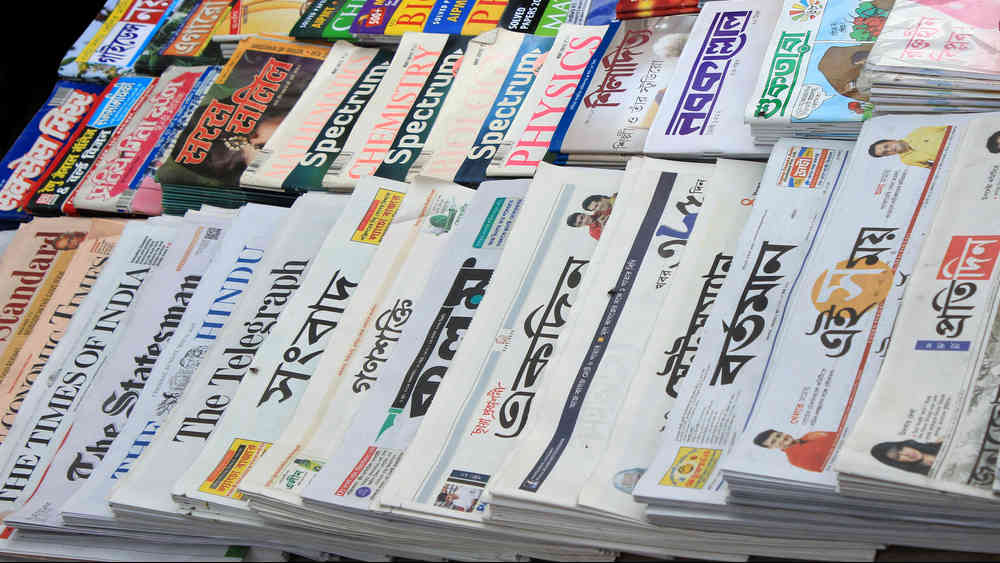The adage, misfortunes never come alone, is quite true for rural stringers working for the print media. Things were and are not good for these ground-zero workers of the fourth estate and there are strong indications of tougher times ahead.
Stringers in small towns, mofussils and rural areas are the foot soldiers of the media industry. They are mostly engaged by smaller newspapers in Hindi and regional languages. These ‘on call’ or part-time workers support the newspapers by providing stories from their localities as and when sought. Informality encompasses their work. They work on the basis of oral instructions and are without much formal training and qualification. Media houses do not invest much on training stringers. These self-trained journalists thus need to have basic resources like a camera, a digital recorder and a two-wheeler as their ‘infrastructural qualification’. Often, identity cards are not issued to these reporters in order to avoid long-term employment benefits.
Stringers are either paid on a per piece basis or in a lump sum payment for all stories, inclusive of all costs incurred. A more popular system is volumetric payment on the basis of column length, where they get a fixed amount per centimetre of the column of published piece. Here, rejected copies are not included while calculating payment; title space — usually printed in bigger font — is also excluded. Either way, the monthly earnings of these rural scribes are too meagre to support a decent living. Worse, the payments are released with considerable time lags.
Acute pay insecurities force stringers to do supplementary jobs along with journalistic duties; many of them run retail stores, internet cafes, mobile repairing shops and so on. They also get advertisements and work as circulation agents for the newspapers. In fact, for many newspapers, the primary reason for engaging locals as stringers is to increase the circulation base and advertisement revenues. Social capital and public relation skills are considered more important while recruiting stringers than professional qualifications. To appease those who support newspapers through subscriptions and advertisements, stringers often report positively about these local patrons. At times, in order to make a decent living, certain stringers are also found to engage in blackmailing and extortion by reporting negative or fake news. Such pernicious acts can even be practised at the behest of (or with tacit consent from) employers.
Stringers often face attacks from local mafias and goons on exposing activities like illegal mining or other misdeeds in rural areas. Similarly, they also have to face hostile politicians and bigwigs in the locality if they report truthfully about wrongdoings. Murder of and attacks on ground reporters are rampant in India; worse, stringers are often left in the lurch by their employers in such situations.
Transformations in news production techniques and encroachment of digital media have also affected the job prospects of these newsmen considerably. With the availability of wire facilities (providing an assured pool of cost-efficient news material) and alternative forms of reporting (through television, internet and social media platforms), increasingly the traditional mode of news reporting and rural stringers are thus becoming redundant. More so in the age of citizen’s journalism, where every person with a mobile phone is a potential reporter. Soon the role of stringers will become limited to functions like distribution, circulation and ad-gathering only.
The unexpected onslaught of the Covid-19 pandemic and the subsequent lockdowns have severely affected the newspaper industry as a whole. In India, there has been a considerable drain in the circulation of newspapers, which eventually resulted in many austerity measures and survival strategies, including closure of smaller newspapers, shutting down of news bureaus and resizing of the workforce. At a time when readers suddenly did not want to read hard copies of newspapers, many organizations shifted their focus towards strengthening online versions. Along with this, there were also efforts to restructure the content and format of print versions by cutting down the number of pages and including all sorts of advertisements to meet at least the day-to-day running costs of business.
The pandemic has thus brought in yet another layer of job insecurity which manifested in many ways including job loss, wage cuts, stagnancy in wages and delayed payments. Alongside this, grass-root reporting has become more strenuous and dangerous. Those who got the chance to work were to report from the ground, risking their health and safety as well as that of their family members; they had to work amidst crowds without masks, sanitizers and PPE kits, without following any social distancing norms. What is worse, owing to their irregular and informal status, they are also not eligible for medical cover and other benefits either from their employers or the government.
Given their extremely precarious status in the labour market, any shock in the industry has much deeper implications for stringers. Unsurprisingly, with the closure of smaller newspapers and the overall decline in the print-media business due to the onslaught of the pandemic, many of the rural reporters will be forced to search for alternative livelihoods in the near future.
Babu P. Remesh is the Dean, School of Development Studies, Ambedkar University, Delhi











